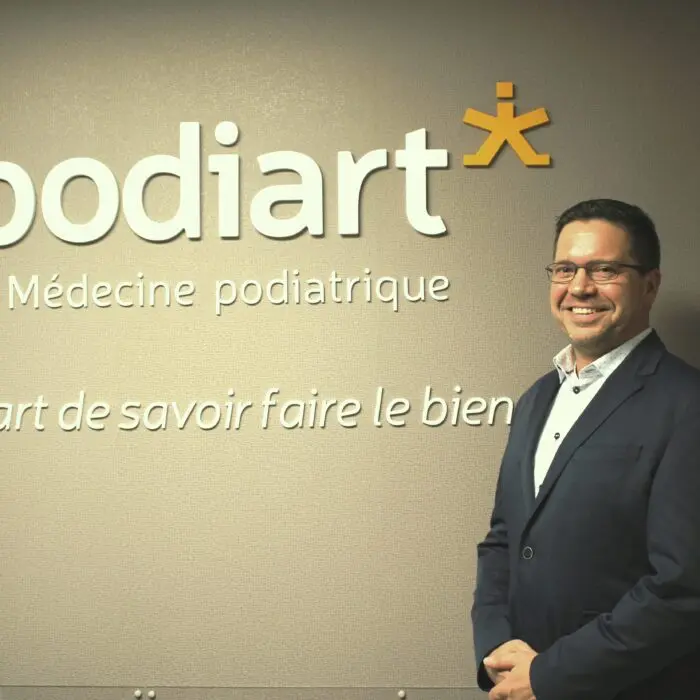As a podiatrist and business owner, Dr. Serge Gaudreau masterfully orchestrates the activities of the Beloeil clinic.
This former president and administrator of the Ordre des podiatres has also received training worthy of the podiatric services he provides.
From 1996 to 2000, Dr. Gaudreau learned the basics of the profession at the New York College of Podiatric Medicine.
Eventually, in 2010, after having practiced for a few years in Montréal, Dr. Gaudreau founded his own clinic and surrounded himself with other exceptional podiatrists.
Today, it is truly an attentive team concerned about your well-being that is standing by to assist you at the Beloeil podiatry clinic.
Beloeil podiatry clinic
545 Boulevard Sir-Wilfrid-Laurier #112,
Beloeil, QC J3G 4H8
directions
1-450 467-2144 Toll free
Monday
9:00 - 17:00
Tuesday
10:00 - 20:00
Wednesday
10:00 - 17:00
Thursday
9:00 - 15:00
Friday
9:00 - 16:00
An honest clinic that pays attention to every detail
Always attentive to the needs of its clientele, the Beloeil Podiatry Clinic is backed by the expertise and experience of its team of dedicated professionals.
Located on Montreal’s South Shore, the Beloeil Podiatry Clinic provides foot care to a wide variety of patients. From child podiatry to podiatry for seniors and sports medicine, the Beloeil podiatry clinic has the necessary equipment to manage your pain.
Frequent problems
Treatments provided
- Plantar orthotics: types, benefits, and adaptation tips
- Cortisone injections
- Foot care – Nails, corns and calluses treatment
- Evaluating Children’s Feet
- Biomechanical exam : symptoms and treatments
- Foot ultrasound imaging
- Ultrasound guided injection
- Digital radiography of the foot
- Nail culture : importance, advantages and procedure
- Therapeutic foot taping
- Ultrasound treatment
- Stress fracture in the foot
- Treatment for excessive foot sweating
- Treatment of foot pain by the podiatrist
- Toenail deformity : treatments
Responsible for personal information/confidentiality: Ben Lee 450-281-1292
Request an appointment at the clinic
Leave us your contact details and availability and we will contact you to make an appointment.
Please note that if you are seeking podiatry services following a work-related accident (CNESST) or a road accident (SAAQ), please contact us before your appointment to obtain more information about the reimbursement procedures.

